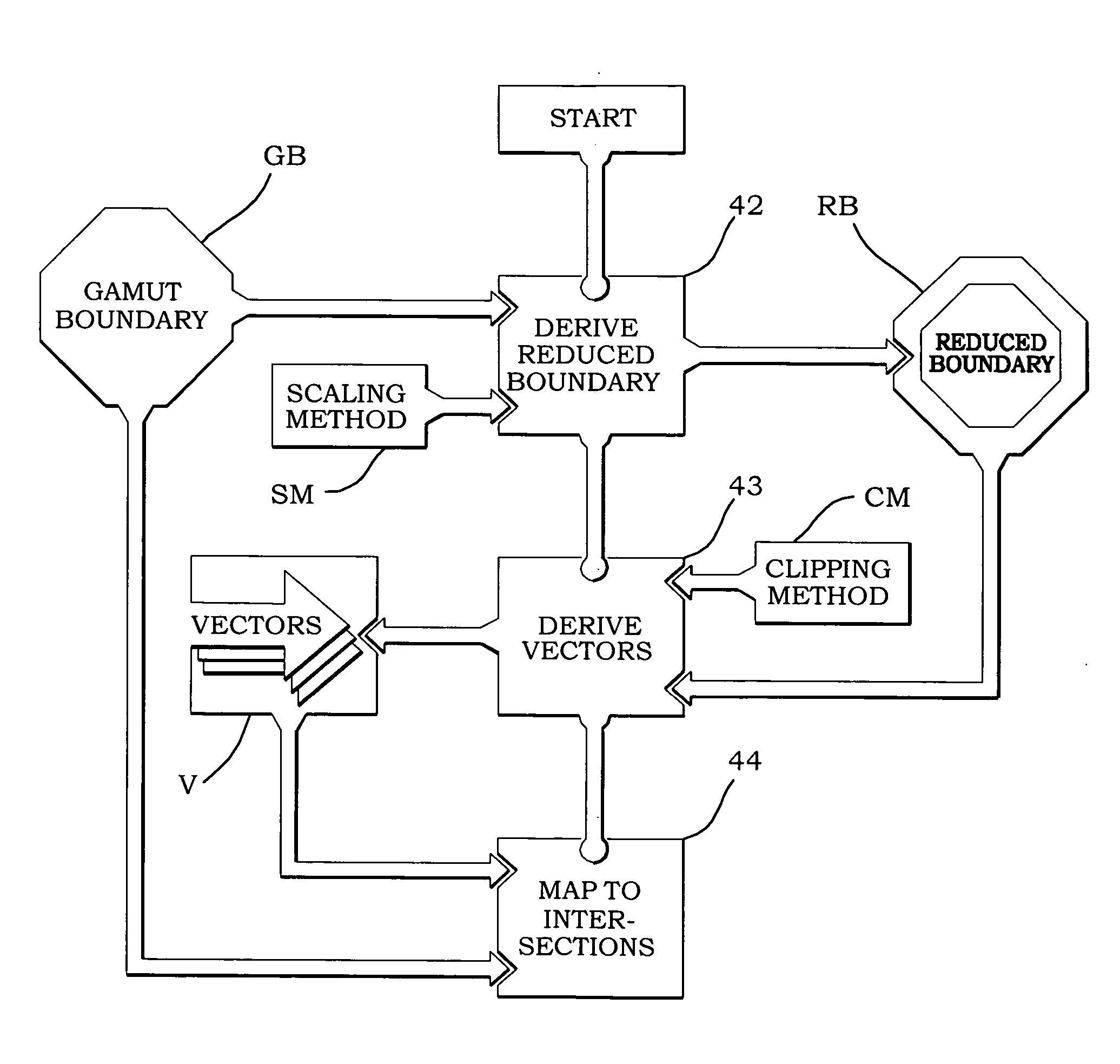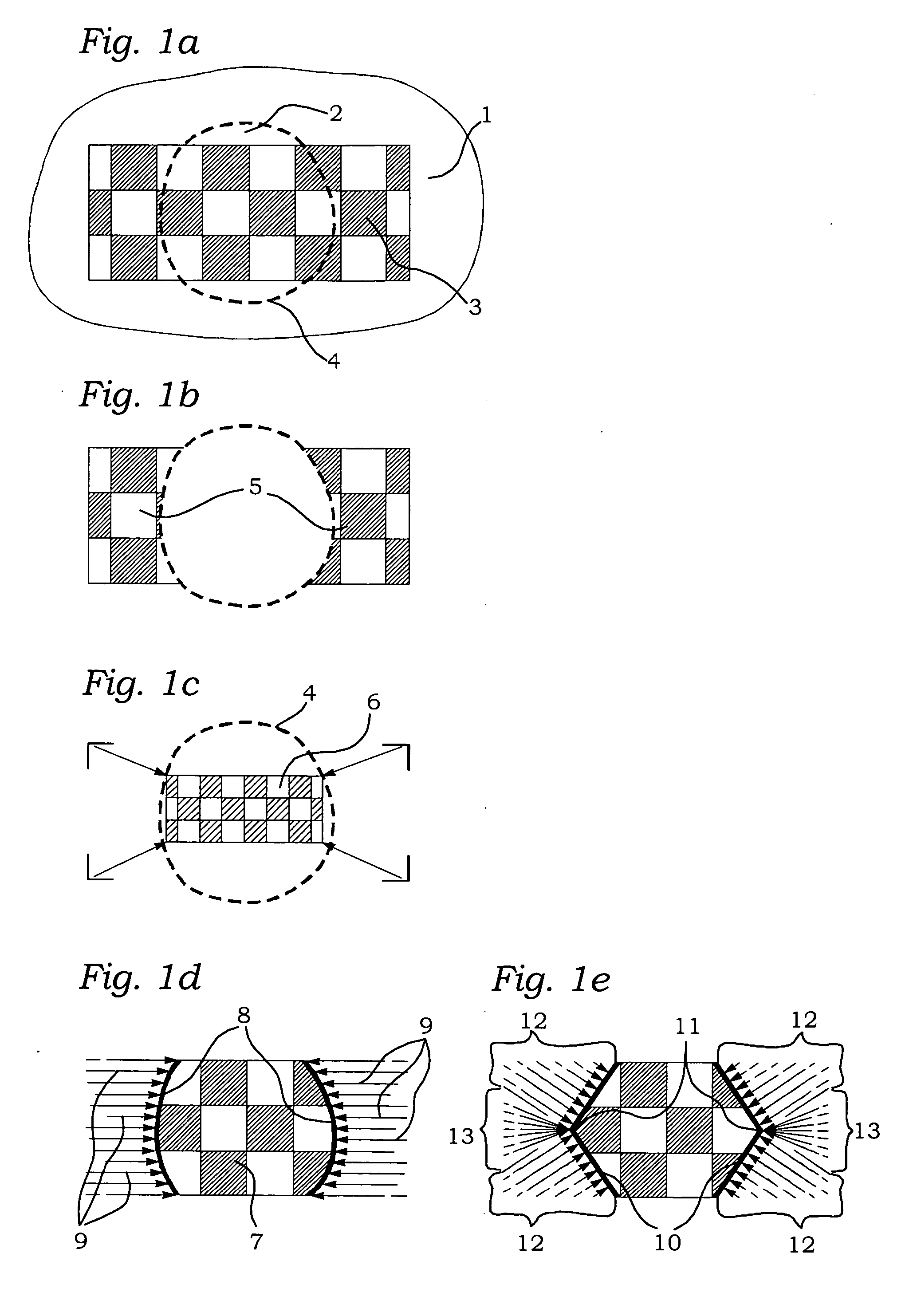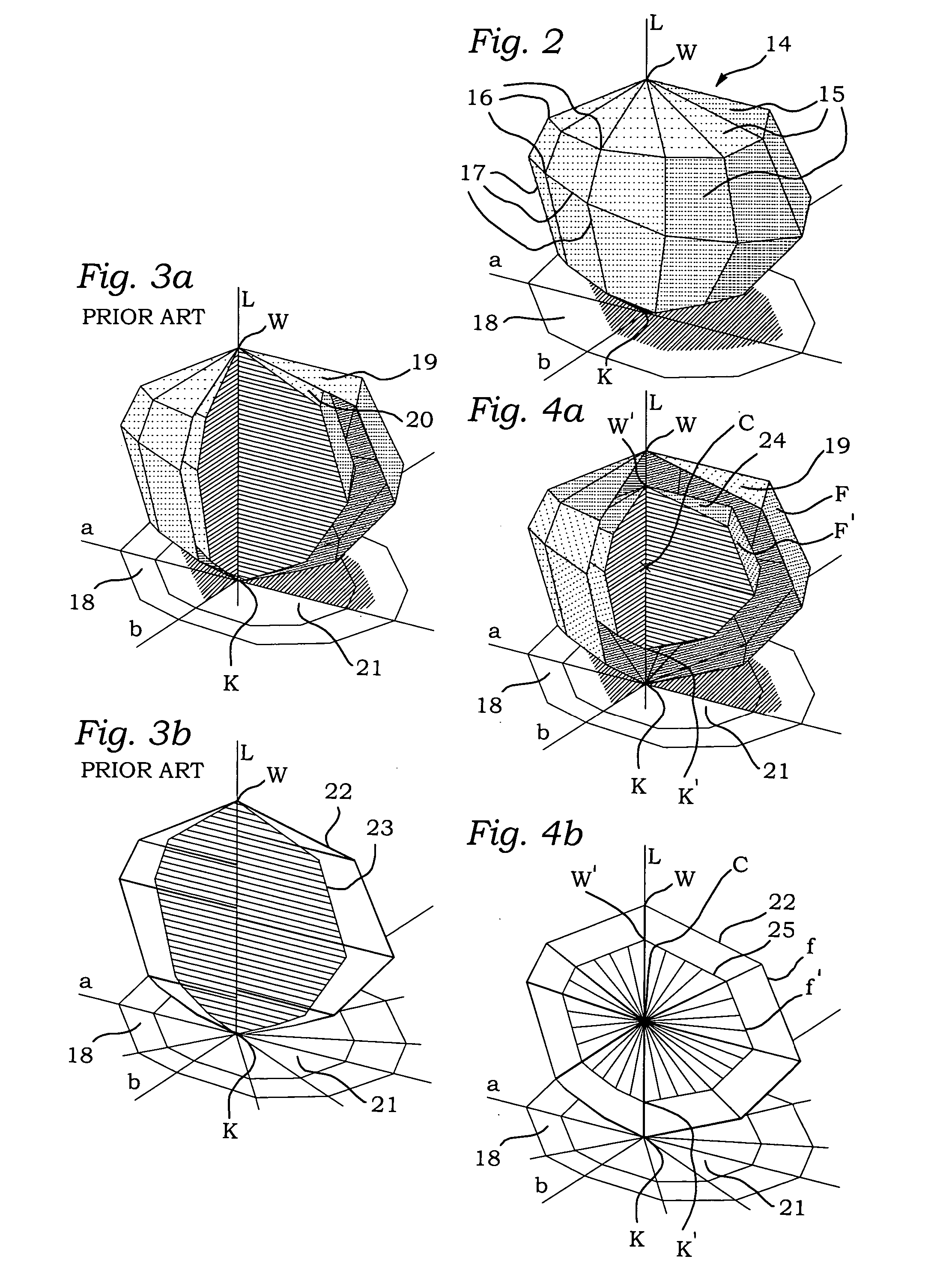Color mapping
a color mapping and color technology, applied in the field of color mapping, can solve the problems of limited color reproduction ability of devices like printers, copiers or monitors, and inability to match all visible colors with devices' limited colorants, so as to reduce the gamut, reduce the size, and reduce the effect of siz
- Summary
- Abstract
- Description
- Claims
- Application Information
AI Technical Summary
Benefits of technology
Problems solved by technology
Method used
Image
Examples
Embodiment Construction
[0033]FIG. 1a-d, show diagrams related to an example of an image containing colors a certain device cannot reproduce. Before proceeding further with the detailed description of FIG. 1, however, a few items of the embodiments will be discussed.
[0034] As mentioned at the outset, images reproduced by printers, copiers, monitors, projectors or other imaging devices are supposed to match the colors of the original as closely as possible, i.e. the reproduction should cause as similar a sensation to the human visual system as the original.
[0035] The human visual system perceives colors basically in three attributes, the color's hue, chroma and lightness.
[0036] But a device's ability to reproduce colors as they appear in the real world is limited by the technology it uses. The colors a device can reproduce are a subset of the set of all the visible colors; they form a sub-space within the color space, called the reproduction device's color gamut. The surface of this sub-space, the gamut ...
PUM
 Login to View More
Login to View More Abstract
Description
Claims
Application Information
 Login to View More
Login to View More - R&D
- Intellectual Property
- Life Sciences
- Materials
- Tech Scout
- Unparalleled Data Quality
- Higher Quality Content
- 60% Fewer Hallucinations
Browse by: Latest US Patents, China's latest patents, Technical Efficacy Thesaurus, Application Domain, Technology Topic, Popular Technical Reports.
© 2025 PatSnap. All rights reserved.Legal|Privacy policy|Modern Slavery Act Transparency Statement|Sitemap|About US| Contact US: help@patsnap.com



